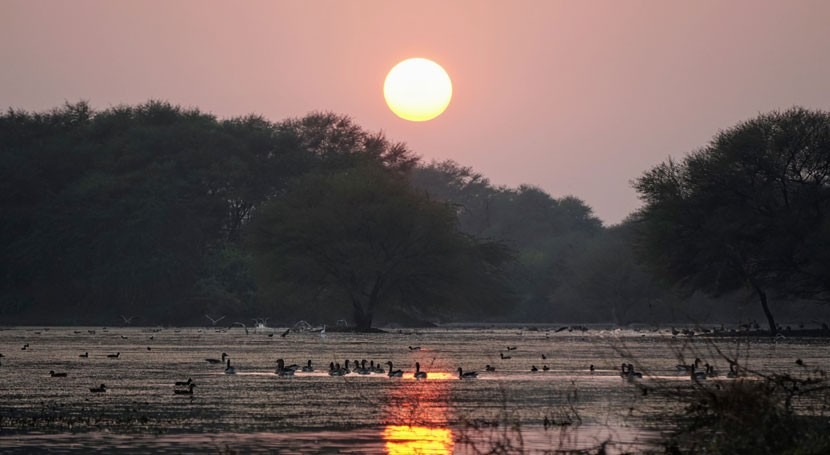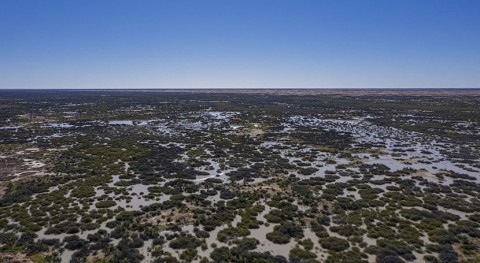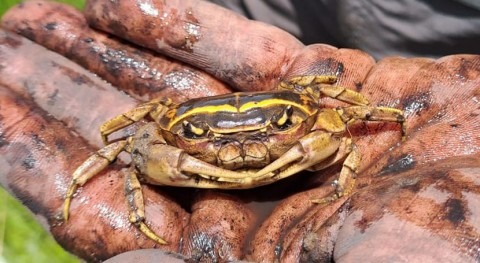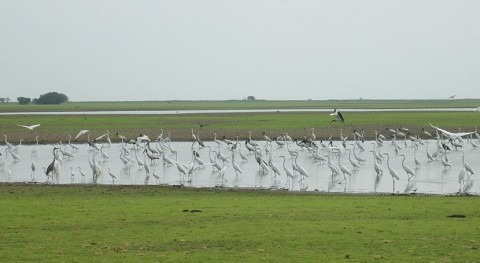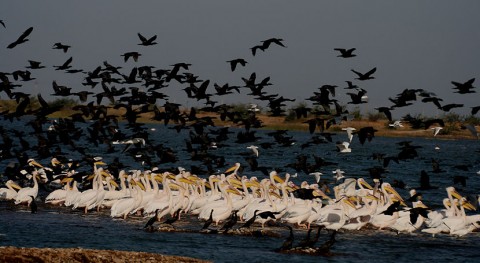Wadhvana Wetland (no. 2454 on the List of Wetlands of International Importance) in Gujurat is a reservoir located in a semi-arid agricultural landscape. The wetland is internationally important for its birdlife as it provides wintering ground to migratory waterbirds, including over 80 species that migrate on the Central Asian Flyway. They include some threatened species such as the endangered Pallas’s fish-eagle (Haliaeetus leucoryphus) and the vulnerable common pochard (Aythya ferina). The Site provides a global example of how a wetland originally created for irrigation has come to serve as an important waterbird habitat and hub for ecotourism and nature education.
Thol Lake Wildlife Sanctuary (Site no. 2458 on the Ramsar List) is also in Gujurat and on the Central Asian Flyway; more than 320 bird species can be found, such as the critically endangered white-rumped vulture (Gyps bengalensis) and sociable lapwing (Vanellus gregarius). The Lake provides water for drinking and irrigation and enables groundwater recharge, and is also used for recreation and tourism.
The shallow lake at the core of the Sultanpur National Park in Haryana (Site no. 2457) is fed by the overflow from neighbouring canals and fields, and replenished by saline groundwater. The wetland harbours a rich plant and animal life; it supports more than 220 species of resident, winter migratory and local migratory waterbirds at critical stages of their life cycles. More than ten of these are globally threatened, including the critically endangered sociable lapwing (Vanellus gregarius), and the endangered Egyptian vulture (Neophron percnopterus), saker falcon (Falco cherrug), Pallas’s fish eagle (Haliaeetus leucoryphus) and black-bellied tern (Sterna acuticauda).
Bhindawas Wildlife Sanctuary (Site no. 2459) is a human-made freshwater wetland, and is the largest wetland in Haryana. Over 250 species use the Sanctuary throughout the year as a resting and roosting site. The Site supports more than ten globally threatened species including the endangered Egyptian vulture (Neophron percnopterus), steppe eagle (Aquila nipalensis), Pallas’s fish eagle (Haliaeetus leucoryphus) and black-bellied tern (Sterna acuticauda). The Sanctuary helps to maintain the region’s water table by recharging groundwater, and is also a natural flood buffer.


